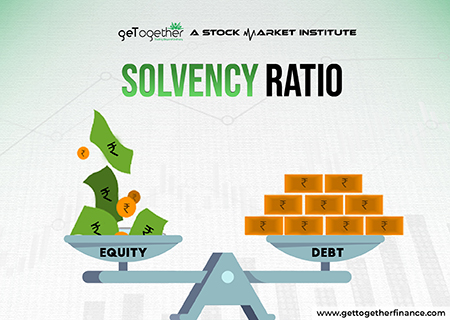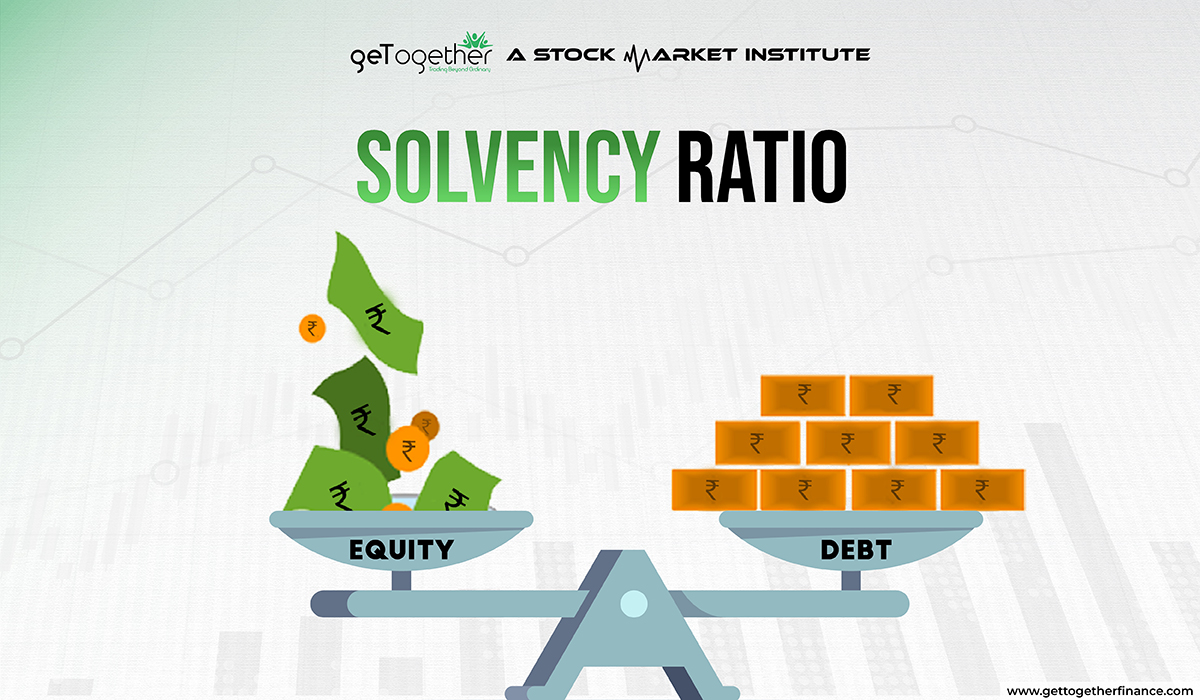Solvency Ratio


Introduction
To analyze a person’s finances, we check how they have purchased things, how much money they have to pay, and how much earnings they have. The same goes for a company. The solvency ratio is the criteria that helps in checking whether the finances of the company are in a good position or not. The solvency ratio is one of the many criteria that help in predicting whether the company can survive long in the market or not.
A company runs on a certain capital and this capital comes from various sources. Some are in the form of investment and some are in the form of loans or debts. A company has two types of funds, debt and equity. Equity is the invested money and in return, the investor gets a share in the company.
Whereas, the debt is similar to the loan. The company has to clear off debts with interest.The company needs to repay its debtors. Every company has a different ability to repay its debts, and this ability to repay or clear its debts is known as the solvency ratio.
To work in a profitable way, a company should have adequate cash flow along with investments to clear its short-term as well as long-term debts.
What is the Solvency Ratio?
A company’s ability to clear its long debts with the help of current assets is measured by the solvency ratio. Since it helps in determining whether the company can pay off its debts freely or not, it is a determinant of the financial health of the company.
Instead of measuring the net income of the company, this ratio undertakes the actual cash flow of the company. This helps in giving a realistic answer to the board of directors. Depreciated assets and non-cash expenses are also considered in the solvency ratio. This helps in determining the company’s position to stay working more closely.
Many investors consider looking into this ratio of the company before investing in it. It helps them know whether the company has enough assets or resources to settle their debts at some point and work freely. Further, investors can have a clear idea about the functioning and capacity of the company in terms of finances.
Since this ratio considers various aspects of the business apart from just the net income. It significantly helps in determining whether the company can stay profitable in the long-term view.
Types of Solvency Ratio
1. Debt-to-Asset Ratio:

This ratio simply tells how much the company is in debt compared to its current assets. If the company has a higher debt-to-assets ratio (above 1.0), it indicates that the company is short of funds and the amount of debt is overtaking its assets and profits. Whereas, if the company has a lower ratio (below 0.9), it indicates that the company is in a profitable situation.
2. Interest Coverage Ratio:

This ratio helps in determining how many times a company can pay the current interest rates in their existing funds or current earnings. In simpler terms, it helps in determining how much a company can work in terms of financial crisis or any sudden risk.
If this ratio is high, then the company is said to be in a good financial position and is capable of handling financial crises. Whereas if the ratio is lower (below 1.5), then the financial situation of the company is not good. In this case, the company will not be able to pay the interest to the debtors regularly with the existing funds.
3. Debt-to-Equity Ratio:

The debt to Equity ratio helps in comparing how much the company has borrowed and how much money the investors or owners have put into it. If the debt-to-equity ratio is high, then the company will be in trouble to pay off their debts. Whereas, the lower the ratio, the more profitable the company is. In case the company liquidates, the company with a lower Debt-to-equity ratio will not face any problems. This is because they have enough money or capital to clear their debts.
4. Share Holder-Equity Ratio ( SER ):

It is also known as the shareholder-equity ratio. This ratio helps in knowing how much of the company’s capital is funded by equity compared to the total capital.
Here, if the ratio is higher, the company is in a good financial position. Whereas, if the ratio is lower, the company has less equity compared to debt, which signifies a critical financial position.
Importance of Solvency Ratio
- This ratio helps in determining how the different business operations are affecting the cash flow of the business. Since every aspect of money is considered in these ratios, it helps in identifying how the company is going to perform in the long term based on current finances and operations.
- With the help of clear data about the solvency ratios, the board of directors can set up an adequate budget for the company. Adequate allocation of funds in different areas of business can be done to generate higher revenue. This is because the ratio provides data about the financial priorities of the company.
- Financial risk can be easily assessed with all the afore mentioned ratios. It helps investors in knowing whether to invest in a company or not.
Limitations of Solvency Ratio
It must be clear by now that solvency ratios consider the amount of debt the company has to assess its financial position. However, if we decide to compare two companies of different sectors, solvency ratios might not be the perfect criterion.
A company can have a low debt amount but mismanaged financial practices. Low debt can lead to a good solvency ratio, but this doesn’t mean good financial condition. When the company is not utilizing its finances well and has distorted cash management, then its adequate solvency ratio and low debt are of no good.
Different companies need varied capital based on their nature of business. A manufacturing company will always have a higher debt compared to the service provider company. This is because manufacturing companies need more resources and types of machinery to function. But, in this case, higher debt doesn’t justify a bad financial position. Hence, the solvency ratio shouldn’t be the only criteria to look at to assess the company’s financial position. Also, the manufacturing company might have higher debt, but adequate financial management. Having an adequate financial management process can surely boost their profits.
Conclusion
In conclusion, solvency ratios provide an important insight into a company’s financial health and ability to satisfy long-term obligations. These ratios provide crucial insights about a company’s risk of default and overall stability by examining the balance between debt and equity. Debt-to-equity and debt-to-assets ratios are important tools for investors and stakeholders to use when making informed decisions about a company’s financial status, assisting in sensible investment decisions and limiting potential risks.
Now that we have read about Solvency Ratio, Let’s read about one more important term which is essential for any company to operate and that is :- WORKING CAPITAL
